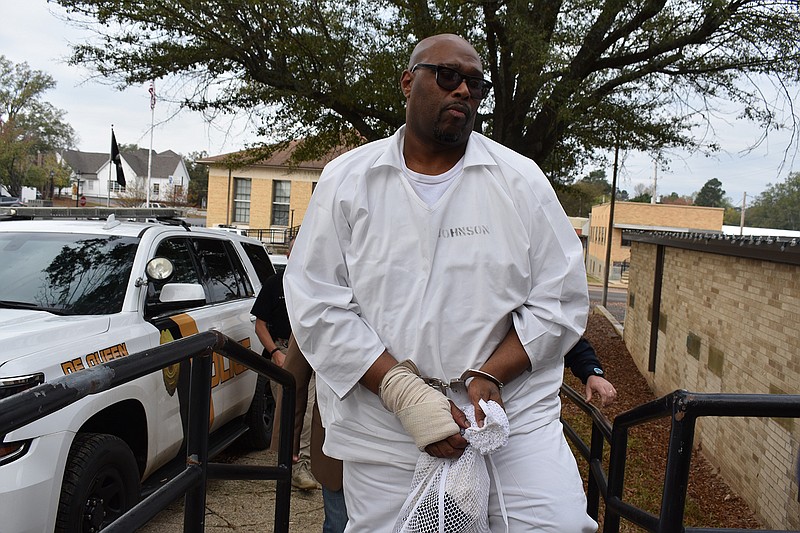If the appeal to have the DNA retested and the process fails to discover new evidence, the family of Stacey Eugene Johnson will try to clear his name even if he is executed.
Johnson has been twice convicted of the murder of Carol Heath.
Three family members attended the DNA hearing Wednesday at Sevier County Courthouse in De Queen, Ark., listening to witnesses discuss the improvements in DNA testing since the original tests were run nearly 25 years ago.
Ninth Circuit Court Judge Charles Yeargan presided over the hearing Wednesday and will decide if additional DNA testing is required.
"We've established that modern DNA testing methods can prove Mr. Johnson's innocence, and Arkansas law clearly established that Mr. Johnson is entitled to that testing," said Karen Thompson, a senior staff attorney with the Innocence Project, which is affiliated with Cardozo School of Law.
"It's just common sense that before the government sends a man to his death, we should use the best scientific methods to make sure we have convicted the right person," in a previous article.
Evidence that could be tested includes hairs, swabs taken from the victim's wounds and other body parts, fingernail samples and clothing worn and used by the perpetrator during the murder.
The family contends Johnson is innocent.
"Even if he is executed, we will work to clear his name," said his mother, Shirley Johnson of Horatio, Ark.
Stacey Johnson's stepdaughter and wife, Latasha Logan and Judy Robinson Johnson of Dermott, Ark., attended the hearing.
"It has been awful. I couldn't watch the news showing the table where Stacey was going to be executed," his mother said.
Prosecutor Bryan Chesshir defended the DNA testing methods conducted during the two trials including the 700 pages of documents compiled by Arkansas State Police.
Johnson's lawyers opened the hearing by asking Yeargan to allow expert testimony about the science of eye-witness testimony. Chesshir argued it was an attempt to attack the testimony of an eye witness.
Heath was killed between the night of April 1 and the early morning hours of April 2, 1993, while her 6-year-old daughter and 2-year-old son hid in a closet, according to reports. The children stayed in the closet all night.
Their footprints were found near their mother.
Dr. Frank Peretti, an associate medical examiner for the State Crime Lab, said during the murder trial that Heath's death was caused by a cut to her throat, strangulation and blunt-force head injuries.
Heath's killer left a wound on her neck that went a quarter-inch into her spine. She also had defensive wounds on her hands and arms. Peretti said the victim had a bite mark on her right breast and an abrasion on her left breast. Hairs found there were tested, and the DNA matched Johnson's.
Rose Cassidy, the victim's sister-in-law, called police after she found Heath's partially nude body on the living room floor in a pool of blood, according to reports. Heath's daughter identified Johnson as the man who came to the apartment. She twice picked Johnson's photo out of seven photos shown to her by the police.
The girl was later found to be incompetent to testify because of psychological trauma described by her psychologist.
Johnson was twice convicted and sentenced to death in the case. The Arkansas Supreme Court overturned the first conviction in 1996 because a police officer testified the victim's daughter had identified Johnson as the killer. The court said the hearsay evidence was improper and ordered a new trial. Johnson was again convicted and sentenced to death in 1997 without the hearsay evidence. The Arkansas Supreme Court upheld the decision in 2000. In another decision delivered May 18, 2006, the state Supreme Court ruled that the trial court correctly found that the hairs were retested three times.
"The final DNA test of the hairs indicated a statistical frequency distribution that the genetic material belonged to someone in the African-American population other than the appellant (Johnson) was 1 in 20 million. We hold that the circuit court complied with the letter and spirit of our mandate. Another retest is not necessary," the 2006 ruling stated.

